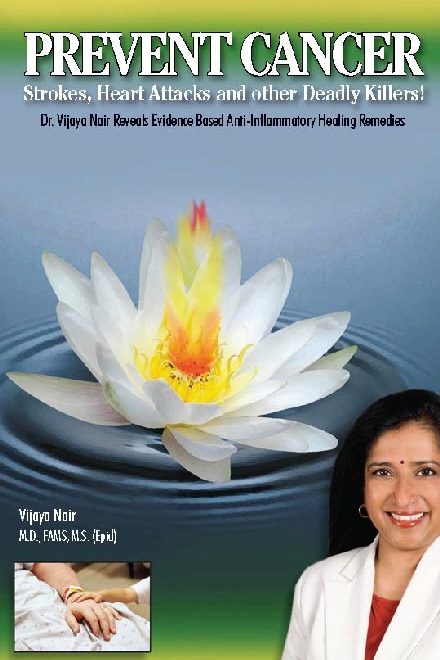 Curcumin and other Jiva Spices and Herbs
Curcumin and other Jiva Spices and Herbs
The first use of spices and herbs can be traced back to approximately 50,000 B.C. and 10,000 years ago, respectively. Spices and herbs such as black pepper, cinnamon, parsley, oregano, etc. are generally added for improving taste. Nevertheless, spices and herbs are more powerful than what most people may think. Spices and herbs exhibit a natural resistance to bacterial diseases and enhance certain bodily functions. The ancient Greeks used spices as medicines while Indians have used spices as digestive aids for thousands of years. The Chinese have been using herbs as components of traditional Chinese medicine to restore balance and harmony within the body. Hundreds of studies have explored the therapeutic potential of spices and herbs, and the research results suggest that spices and herbs containing high levels of phytochemicals and active components such as phthalides, polyacetylenes, phenolic acids, flavonoids, coumarins, capsicinoids, triterpenoids, sterols, and monoterpenes account for anti-inflammatory, antibacterial, activiral, anti-aging, antimicrobial, and anti-tumor properties.
Besides having the function of fighting foodborne microorganisms and reducing food poisoning, spices and herbs are also known for their potent anti-oxidant properties. Anti-oxidants are important to minimize the damage done to the cell tissues by free radicals that contribute to various medical conditions including, but not limited to, cancers, arteriosclerosis, arthritis, and premature aging. Free radicals are produced in the body as a result of exposure to environmental p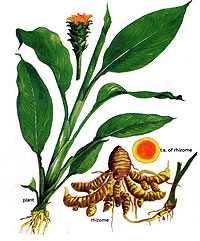 ollutants, radiation, UV light, cigarette smoke, food additives, and pesticides, or as by-products of normal metabolism. Increasing the concentration of anti-oxidants in cell tissues is considered desirable to help neutralize free radical mediated damage. Anti-oxidants provide the best defense against free radicals by blocking their production, or by serving as “biochemical kamikazes”, allowing themselves to be destroyed by free radicals in place of healthy cells.
ollutants, radiation, UV light, cigarette smoke, food additives, and pesticides, or as by-products of normal metabolism. Increasing the concentration of anti-oxidants in cell tissues is considered desirable to help neutralize free radical mediated damage. Anti-oxidants provide the best defense against free radicals by blocking their production, or by serving as “biochemical kamikazes”, allowing themselves to be destroyed by free radicals in place of healthy cells.
Even though anti-oxidants can be obtained from food sources such as vegetables and fruits, it is very difficult to get enough of them from these sources to combat the free radicals constantly being produced in our environment. A study conducted by the U.S. Department of Agriculture found that most cooking herbs and spices such as cinnamon, turmeric, and pepper have greater disease-fighting antioxidant properties per gram than do many fruits and vegetables. Therefore, taking supplements derived from spices and herbs provides adequate sources of anti-oxidants to minimize the damage done by free radicals. It is recommended to take smaller doses of several various anti-oxidants than a large dose of only one kind to get the maximum protection.
The ingredients used in JIVA™ address the above issues to provide our customers with the best nutrients in one daily convenient serving. Spices and herbs used in JIVA™ include curcumin, black pepper, cardamom, cinnamon, cocoa, ginger, and stevia.
Curcumin 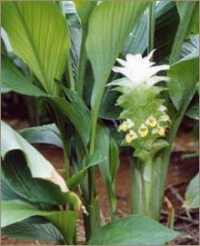 Extracted from the roots of the curcuma longa plant, curcumin is a member of the ginger family, and is the active ingredient of turmeric that gives it a rich yellow color. While curcumin is not used in conventional medicine, it is widely prescribed in Indian medicine as a potent remedy for liver disorders, rheumatism, diabetic wounds, digestive aids, runny nose, cough, and sinusitis. Traditional Chinese medicine uses curcumin as a treatment for diseases associated with abdominal pain, and was used in ancient Hindu medicine as a treatment for sprains and swelling. At least a dozen clinical trials on humans are under way in the United States, Israel and England to test curcumin, and articles on curcumin have been cited 967 times since 2000 in articles reported in PubMed, the National Library of Medicine's research service. It's been demonstrated in human and animals models that curcumin protects the liver, inhibits tumors by stopping precancerous changes within DNA and interferes with enzymes needed for cancer progression, reduces inflammation, fights some infections, and blocks toxic substance from reaching or reacting with body tissues. Curcumin has both antioxidant and anti-inflammatory properties, and it may help lower cholesterol by stopping the oxidation of cholesterol to promote vascular health.
Extracted from the roots of the curcuma longa plant, curcumin is a member of the ginger family, and is the active ingredient of turmeric that gives it a rich yellow color. While curcumin is not used in conventional medicine, it is widely prescribed in Indian medicine as a potent remedy for liver disorders, rheumatism, diabetic wounds, digestive aids, runny nose, cough, and sinusitis. Traditional Chinese medicine uses curcumin as a treatment for diseases associated with abdominal pain, and was used in ancient Hindu medicine as a treatment for sprains and swelling. At least a dozen clinical trials on humans are under way in the United States, Israel and England to test curcumin, and articles on curcumin have been cited 967 times since 2000 in articles reported in PubMed, the National Library of Medicine's research service. It's been demonstrated in human and animals models that curcumin protects the liver, inhibits tumors by stopping precancerous changes within DNA and interferes with enzymes needed for cancer progression, reduces inflammation, fights some infections, and blocks toxic substance from reaching or reacting with body tissues. Curcumin has both antioxidant and anti-inflammatory properties, and it may help lower cholesterol by stopping the oxidation of cholesterol to promote vascular health.
Black pepper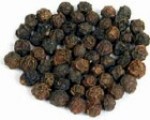 As one of the most common spices on the table, black pepper contains important micronutrients such as copper, calcium, magnesium, and phosphorus. It was historically used as seasoning as well as medicine in traditional Indian medicine to treat various medical conditions such as acute and chronic bronchitis, leprosy, tuberculosis, and diarrhea due to its anti-inflammatory, anti-septic, analgesic, anti-diarrhetic, anti-dysenteric, and anti-microbial properties. Coming from the dried fruit of the pepper plant called peppercorn, the active ingredient of black pepper is Piperine. Piperine, the pungent component of black pepper that initials the “burning” aftertaste, enhances the bioavailability of drugs, promotes the release of epinephrine (the hormone that is important to the body’s metabolism), and increases levels of circulating thyroid hormones (the hormone that controls the body processes and functions). It also has been found to be a compound that desensitizes the sensory neurons involved in pain pathways and gastrointestinal functions and this may account for the therapeutic activities of black pepper. Moreover, research studies suggest that black pepper and its active ingredient piperine are a potent protection against high-fat induced oxidative stress to cells . In other words, black pepper increases the defense mechanism of tissues and organs against cell injury and diseases by neutralizing the damage of free radicals.
As one of the most common spices on the table, black pepper contains important micronutrients such as copper, calcium, magnesium, and phosphorus. It was historically used as seasoning as well as medicine in traditional Indian medicine to treat various medical conditions such as acute and chronic bronchitis, leprosy, tuberculosis, and diarrhea due to its anti-inflammatory, anti-septic, analgesic, anti-diarrhetic, anti-dysenteric, and anti-microbial properties. Coming from the dried fruit of the pepper plant called peppercorn, the active ingredient of black pepper is Piperine. Piperine, the pungent component of black pepper that initials the “burning” aftertaste, enhances the bioavailability of drugs, promotes the release of epinephrine (the hormone that is important to the body’s metabolism), and increases levels of circulating thyroid hormones (the hormone that controls the body processes and functions). It also has been found to be a compound that desensitizes the sensory neurons involved in pain pathways and gastrointestinal functions and this may account for the therapeutic activities of black pepper. Moreover, research studies suggest that black pepper and its active ingredient piperine are a potent protection against high-fat induced oxidative stress to cells . In other words, black pepper increases the defense mechanism of tissues and organs against cell injury and diseases by neutralizing the damage of free radicals.
Ginger
Originating in southern China, ginger plays an essential role in the Chinese diet as well as in traditional Chinese medicine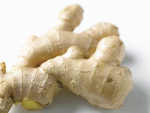 . It has been used to treat diarrhea, nausea, and aid the digestive system by increasing the flow of digestive juices, which in turn speed up the time it takes for food to travel through the intestines and prevent cancer-induced substances to stay too long in the digestive tract. Like its relative, curcumin, ginger has anti-inflammatory, anti-tumor, anti-oxidation, antiviral, and anti-bacterial properties which protects cells against oxidative damage and pathological tissue degeneration caused by inflammation that causes degenerative diseases such as Alzheimer’s disease, and shortens the duration of the common cold. Research studies have indicated that ginger could be an effective therapeutic agent to promote cardiovascular health by lowering blood pressure and cholesterol, manage the effects of diabetic complications due to its anti-diabetic and hypolipidemic properties (lowering the “bad cholesterol”), and provide protection against UVB-induced skin disorders. It has been demonstrated that ginger can increase body temperature and adrenaline secretion that promote energy and oxygen consumption that lead to the increase of metabolism .
. It has been used to treat diarrhea, nausea, and aid the digestive system by increasing the flow of digestive juices, which in turn speed up the time it takes for food to travel through the intestines and prevent cancer-induced substances to stay too long in the digestive tract. Like its relative, curcumin, ginger has anti-inflammatory, anti-tumor, anti-oxidation, antiviral, and anti-bacterial properties which protects cells against oxidative damage and pathological tissue degeneration caused by inflammation that causes degenerative diseases such as Alzheimer’s disease, and shortens the duration of the common cold. Research studies have indicated that ginger could be an effective therapeutic agent to promote cardiovascular health by lowering blood pressure and cholesterol, manage the effects of diabetic complications due to its anti-diabetic and hypolipidemic properties (lowering the “bad cholesterol”), and provide protection against UVB-induced skin disorders. It has been demonstrated that ginger can increase body temperature and adrenaline secretion that promote energy and oxygen consumption that lead to the increase of metabolism .
Stevia 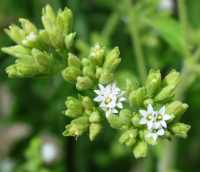 Stevioside, extracted from the herb Stevia rebaudiana, has been used as a sugar substitute in Japan and Brazil for decades with no reported significant adverse effects. Even though stevia is about 300 times sweeter than sugar, it is found to be safe for diabetics, PKU patients, and obese persons who may need to avoid sugar. Most research studies on stevia have focused on its potential therapeutic use as an anti-hypertensive agent. Both human and animal models indicate that steiva is a safe and effective compound in the treatment of hypertension, which could be explained by its ability to inhibit oxygen species formation and endothelin-1 secretion that are responsible for the production of free radicals to cause cell and tissue damage and the increase in blood pressure.
Stevioside, extracted from the herb Stevia rebaudiana, has been used as a sugar substitute in Japan and Brazil for decades with no reported significant adverse effects. Even though stevia is about 300 times sweeter than sugar, it is found to be safe for diabetics, PKU patients, and obese persons who may need to avoid sugar. Most research studies on stevia have focused on its potential therapeutic use as an anti-hypertensive agent. Both human and animal models indicate that steiva is a safe and effective compound in the treatment of hypertension, which could be explained by its ability to inhibit oxygen species formation and endothelin-1 secretion that are responsible for the production of free radicals to cause cell and tissue damage and the increase in blood pressure.
Cardamom 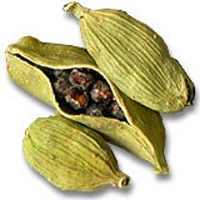
As a member of the ginger family, cardamom has been mainly used as cooking spice and medicine in India and China. It is used to alleviate indigestion, bloating, and intestinal gas. Because of its anti-bacterial, anti-microbial, and potent anti-infective effects, cardamom has also been used to treat inflammation of eyelid, teeth and gum infections, and kill bad-breath and cavity-causing bacteria.
Cinnamon  Coming from the inner bark of a tree cultivated in India, China, and Sri Lanka, cinnamon has been used to treat various illnesses and diseases such as the common cold, diarrhea, digestive problems, and toothache due to its anti-bacterial and warming qualities. Multiple studies suggested that cinnamon protects against heart disease due to its anti-clotting action and its ability to lower harmful cholesterol. Being ranked as the spice that has the second highest anti-oxidant capacity, cinnamon prevents the formation of damaging free radicals that leads to disease and aging. It also increases insulin sensitivity and decreases glucose, which may provide a natural remedy for adult-onset diabetes.
Coming from the inner bark of a tree cultivated in India, China, and Sri Lanka, cinnamon has been used to treat various illnesses and diseases such as the common cold, diarrhea, digestive problems, and toothache due to its anti-bacterial and warming qualities. Multiple studies suggested that cinnamon protects against heart disease due to its anti-clotting action and its ability to lower harmful cholesterol. Being ranked as the spice that has the second highest anti-oxidant capacity, cinnamon prevents the formation of damaging free radicals that leads to disease and aging. It also increases insulin sensitivity and decreases glucose, which may provide a natural remedy for adult-onset diabetes.
Cocoa 
Originating in South America, cocoa is the fermented fatty seed of the cocoa tree. Besides having stimulant effect, cocoa is rich in a lot of therapeutic compounds such as pyrazines, catechin, quinoxalines, pyridines, flavonol, proanthocyanidins, phenylethylamine, and methylxanthines, which are associated with the anti-tumor, anti-oxidative, anti-biotic, anti-diuretic, and anti-inflammatory properties of cocoa. Cocoa has also been shown in a variety of subject models to reduce bad cholesterol, increase good cholesterol, suppress oxidized bad cholesterol, and regulate the immune response. In other words, cocoa exerts protective effects against cardiovascular diseases, hypertension, and autoimmunity.
Lutein
F ound in green leafy vegetables such as spinach and kale, lutein also bounds to one or more fatty acids presents in some plants such as marigolds. In human, lutein is presented in a concentrated area of the retina which is responsible for central vision. Several studies have shown that the relationships between lutein and eye health. Higher dietary intake of lutein or zeaxanthin, the sister compound of lutein, is associated with decreased likelihood of having Age-related Macular Degeneration (AMD), geographic atrophy, and large intermediate drusen (the yellow/white deposits in the retina). It is also found that abnormalities in the metabolism of lutien and zeaxanthin in AMD may reside with the increase of dietary intake of lutien and zeaxanthin.
ound in green leafy vegetables such as spinach and kale, lutein also bounds to one or more fatty acids presents in some plants such as marigolds. In human, lutein is presented in a concentrated area of the retina which is responsible for central vision. Several studies have shown that the relationships between lutein and eye health. Higher dietary intake of lutein or zeaxanthin, the sister compound of lutein, is associated with decreased likelihood of having Age-related Macular Degeneration (AMD), geographic atrophy, and large intermediate drusen (the yellow/white deposits in the retina). It is also found that abnormalities in the metabolism of lutien and zeaxanthin in AMD may reside with the increase of dietary intake of lutien and zeaxanthin.
Bilberry
As part of the blueberry family, bilberry is traditionally recommended to use in diabetes mellitus, 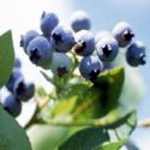 gastrointestinal tract conditions, arthritis, gout, skin ailments, hemorrhoids, poor circulatory, heart problems, blood purification, and stimulate metabolic process. Bilberry has been valued for centuries as a nutritious food. In European medicine, bilberry fruit preparations are now used to enhance poor micro circulation, including eye conditions such as night-blindness and diabetic retinopathy. Numerous studies indicated that bilberry promotes improvement of visual function and regeneration of the retina. Bilberry has also been shown to speed up restoration of visual aculty following exposure to bright flashes of light.
gastrointestinal tract conditions, arthritis, gout, skin ailments, hemorrhoids, poor circulatory, heart problems, blood purification, and stimulate metabolic process. Bilberry has been valued for centuries as a nutritious food. In European medicine, bilberry fruit preparations are now used to enhance poor micro circulation, including eye conditions such as night-blindness and diabetic retinopathy. Numerous studies indicated that bilberry promotes improvement of visual function and regeneration of the retina. Bilberry has also been shown to speed up restoration of visual aculty following exposure to bright flashes of light.
Ashwagandha  Also known as Indian ginseng, ashwagandha has been traditionally used for Ayurvedic system to increase health and longevity, revitalize the body in debilitated conditions, strengthen the body’s resistance against disease and adverse environmental factors, and normalize physiological function such as sleeping. Various studies indicated that ashwagandha has significant anti-stress adaptogenic activity, confirming the use of ashwagandha to increase the use body’s resistance to stresses such as trauma, anxiety, and fatigue. Ashwagandha has also been shown to exhibit anti-depressant effect, which suggested its potential use to calm the mind.
Also known as Indian ginseng, ashwagandha has been traditionally used for Ayurvedic system to increase health and longevity, revitalize the body in debilitated conditions, strengthen the body’s resistance against disease and adverse environmental factors, and normalize physiological function such as sleeping. Various studies indicated that ashwagandha has significant anti-stress adaptogenic activity, confirming the use of ashwagandha to increase the use body’s resistance to stresses such as trauma, anxiety, and fatigue. Ashwagandha has also been shown to exhibit anti-depressant effect, which suggested its potential use to calm the mind.
Shilajit 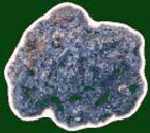
On Sankrit, shilajit/ shilajeet means “conqueror of mountains and destroyer of weakness”. It contains more than 85 minerals, and has been used as a rejuvenator and an adaptogen for thousands of years due to its potent anti-inflammatory and anti-oxidative properties. Shilajit is a natural concentrate of plants of the Himalayas regions, and it is the fossilized form of the plants that had absorbed nutrients from the soil and then died out. This repeated process of thousands of years and the distinct biosphere of the Himalayas created and bestowed medicinal qualities to shilajit, and its healing properties are well-known to the local people for long. In modern research, shilajit has been shown to attenuate cerebral functional deficits and enhance cognitive and memory.
Resveratrol 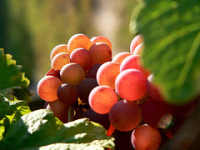

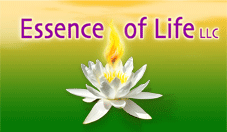
Copyright 2008 © Essence of Life, LLC.
487 East Main St., Suite 297 Mount Kisco, NY 10549-3420 Telephone 800 517 7606


